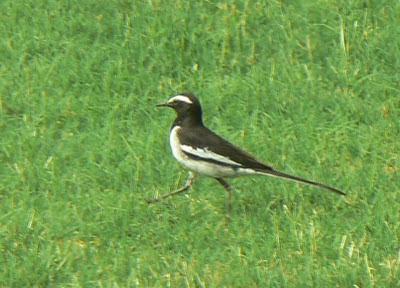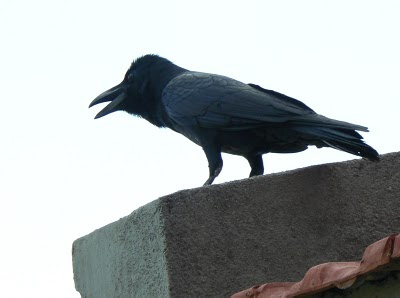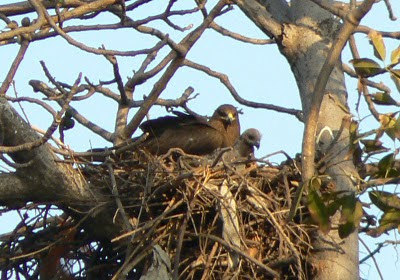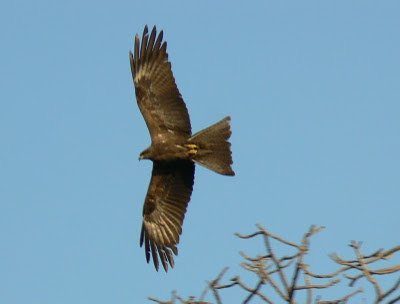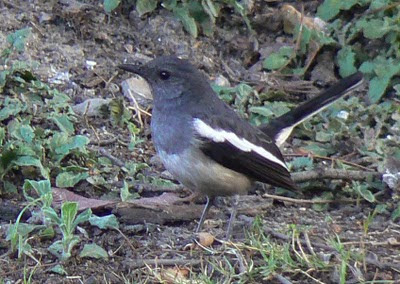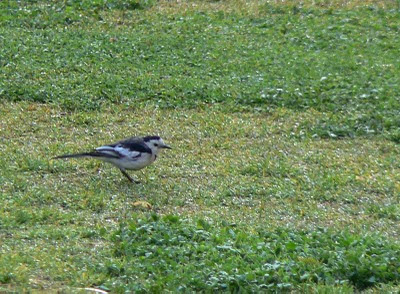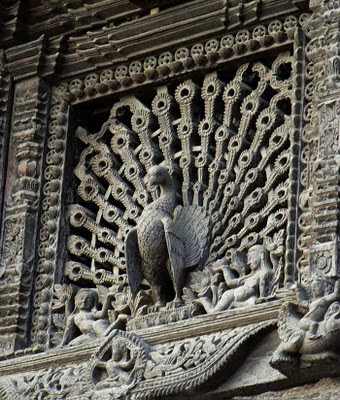Penang birding
I'm happy to be in Penang, Malaysia, again, but once again finding the birding here to be quite a challenge. First of all, the weather at this time is very hot and humid, so that even a short, leisurely walk soon has one completely soaked with perspiration. Mosquitoes are a nuisance, but not terrible. But the dense vegetation of the forest is probably the biggest challenge, and most of the birds I hear are never seen. I think they have learned to use the foliage very successfully to cover their rapid flight to a perch in a hidden place. Then they sing continuously until I get too close, and suddenly I hear the song coming from a new location.
 But some birds, fortunately, are not secretive, so I've managed to see some very interesting ones out in the open, such as the Chestnut-headed Bee-eaters (above) and the Black-naped Oriole.
But some birds, fortunately, are not secretive, so I've managed to see some very interesting ones out in the open, such as the Chestnut-headed Bee-eaters (above) and the Black-naped Oriole.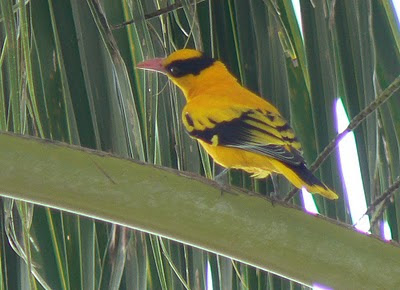
The Greater Racket-tailed Drongo (below) is not flashy, but has a loud song, and those remarkable "rackets" on the ends of the long bare central ribs of two tail feathers. In the photo below they can be seen as slightly blurred objects near the bottom of the photo. They are eye-catching in their almost constant flicking motions.
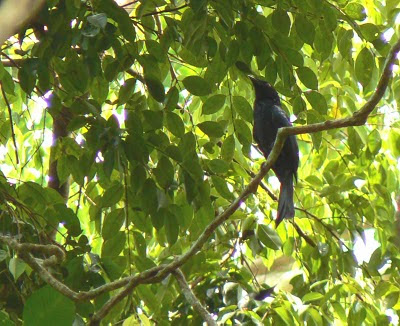
The butterflies are another eye-catching beauty of Penang, and are quite a challenge to photograph. This pair did stop on some wet sand to give me a chancd for a few shots.


